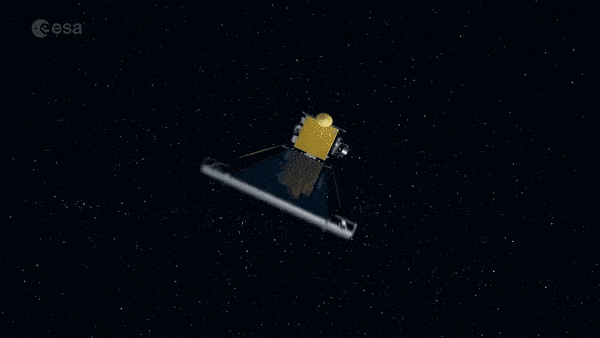
Next comes ESA’s Hera spacecraft, which will fly to Didymos to perform a close-up survey of the aftermath of impact, gathering key information such as the size of DART’s crater, the mass of Dimorphos and its make-up and internal structure. Hera’s extra data will help turn the DART deflection experiment into a well-understood, repeatable technique that might one day be needed for real.
“The Hera team is currently in the midst of our Critical Design Review, which is the last mission’s last major review before launch acceptance,” explains Karim Mellab, Hera’s Assembly, Integration and Test manager.



